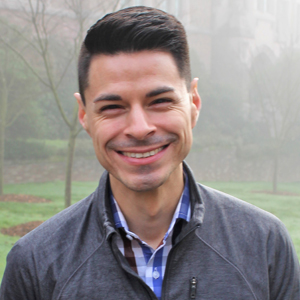Adding an Online Experience to Your On-Campus Orientation
Last updated September 28, 2018Course Length
1h 2m
Last Updated
September 28, 2018

Adding an Online Experience to Your On-Campus Orientation
Last updated September 28, 2018Table of Contents
Overview
Moving pieces of your orientation online can help you save time and money while maximizing student participation and engagement. Throughout this training you will hear how the University of Washington implemented three phases over three years to move more of their orientation online and to continuously improve elements of the process. As we work through each phase, we will discuss how you can adapt this model to your own institution with specific details on the time, budget, and tools needed for each.
No matter where you are in the process of updating your orientation, you will have a better understanding of which phases are feasible for you and how to approach them.
Designed for Face-to-Face Institutions
This program is specifically designed for traditional face-to-face institutions of higher ed that wish to bring a portion of their orientation process into the online environment. Professionals from those institutions who will gain the most out of this event include:
- Directors of First Year Experience programs
- Leaders in student affairs
- Directors of orientation programs
- Directors of transfer student programs
Agenda
In this webcast, Carlos Guillen will describe how the University of Washington (UW) adapted their orientation to a hybrid model using the “flipped classroom” philosophy to include online components, printed publications, and active learning strategies. Evolving through three distinct phases over the course of three years, this webcast will outline the:
- Timeline of developing the online course
- Budget needed
- Tools that were used
- Staffing
- Successes and challenges within each phase
Phase One: Getting Started
In this section, you will learn how to start the process of moving to a hybrid orientation. You will hear how UW partnered with faculty, utilized existing technology, and used student input to design their orientation. Our expert instructor will give you ideas if you are just starting to consider adding an online component to your orientation.
Phase Two: Refining the Online Experience and Maximizing Your Face-to-Face Time
In the second section, you will learn how to maximize the online experience for students. You will see how UW streamlined their online course to avoid redundancy, moved to a more sophisticated platform, and began rethinking their face-to-face orientation and welcome week programs. This section will be invaluable if you have started the process of a hybrid orientation but are thinking about improvements.
Phase Three: Incorporating Emerging Technologies and Innovations
In this final section, you will gain ideas for the future of your hybrid orientation. Carlos will share how the UW program has continued to evolve, allowing for better analytics in the online course, and plans for future iterations. You will walk away with fresh ideas for how to maximize your online experience for orientation.


